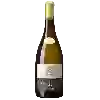
Cave de TainSoleil Couchant Crozes-Hermitage
In the mouth this red wine is a powerful with a lot of tannins present in the mouth.
This wine generally goes well with poultry, beef or game (deer, venison).
Taste structure of the Soleil Couchant Crozes-Hermitage from the Cave de Tain
Light | Bold | |
Smooth | Tannic | |
Dry | Sweet | |
Soft | Acidic |
In the mouth the Soleil Couchant Crozes-Hermitage of Cave de Tain in the region of Rhone Valley is a powerful with a lot of tannins present in the mouth.
Wine flavors and olphactive analysis
On the nose the Soleil Couchant Crozes-Hermitage of Cave de Tain in the region of Rhone Valley often reveals types of flavors of earth, oak or spices and sometimes also flavors of black fruit.
Food and wine pairings with Soleil Couchant Crozes-Hermitage
Pairings that work perfectly with Soleil Couchant Crozes-Hermitage
Original food and wine pairings with Soleil Couchant Crozes-Hermitage
The Soleil Couchant Crozes-Hermitage of Cave de Tain matches generally quite well with dishes of beef, lamb or poultry such as recipes of monkfish tail with white butter, lamb with masalé sauce and rice or cheeseburger from a to z.
Details and technical informations about Cave de Tain's Soleil Couchant Crozes-Hermitage.
Discover the grape variety: Syrah
No one can agree on the origin of Syrah, the black grape variety found today in the Rhône Valley, Provence, Languedoc-Roussillon and southwestern France. Several legends speak of its possible origin in Sicily, Persia or Syria. Tests have finally revealed that it originated in the northern Côtes du Rhône valley. Syrah is a fragile grape variety, which fears drought and is susceptible to disease. Its long shoots are not very resistant to the mistral, which is why they are often tied up or cut short. It needs soil rich in trace elements to feed itself. In these conditions, it produces bunches of beautiful bluish-black grapes with medium-sized berries and sweet, spicy juice. Its red wines are deep in colour, with fruity, spicy and floral aromatic complexity and tannins that structure the whole. With little acidity, they are rather full-bodied and have a high alcohol content. Syrah also makes fruity rosé wines, which are pleasant and have a nice finesse.vinified on its own, Syrah is the only red grape variety of the AOC Cornas and is the majority in the AOC Côte-Rôtie and Hermitage. It is also recommended in the Côtes-du-Vallée du Rhône, Saint-Joseph and Châteauneuf-du-Pape appellations. Finally, the AOCs Palette, Baux-de-Provence, Corbières, Côtes-du-Roussillon, Fronton... also produce it. Today, Syrah is a grape variety that is constantly increasing in surface area throughout the world. It is growing in Italy, Australia, South Africa, Argentina and Mexico.
Last vintages of this wine
The best vintages of Soleil Couchant Crozes-Hermitage from Cave de Tain are 0, 2019
Informations about the Cave de Tain
The Cave de Tain is one of wineries to follow in Crozes-Hermitage.. It offers 219 wines for sale in the of Crozes-Hermitage to come and discover on site or to buy online.
The wine region of Crozes-Hermitage
The wine region of Crozes-Hermitage is located in the region of Rhône septentrional of Rhone Valley of France. Wineries and vineyards like the Domaine Combier or the Domaine M. Chapoutier produce mainly wines red and white. The most planted grape varieties in the region of Crozes-Hermitage are Marsanne, Roussanne and Mourvèdre, they are then used in wines in blends or as a single variety.
The wine region of Rhone Valley
The Rhone Valley is a key wine-producing region in Southeastern France. It follows the North-south course of the Rhône for nearly 240 km, from Lyon to the Rhône delta (Bouches-du-Rhône), near the Mediterranean coast. The Length of the valley means that Rhône wines are the product of a wide variety of soil types and mesoclimates. The viticultural areas of the region cover such a distance that there is a widely accepted division between its northern and southern parts.
The word of the wine: Oxidative (breeding)
A method of ageing which aims to give the wine certain aromas of evolution (dried fruit, bitter orange, coffee, rancio, etc.) by exposing it to the air; it is then matured either in barrels, demi-muids or unoaked casks, sometimes stored in the open air, or in barrels exposed to the sun and to temperature variations. This type of maturation characterizes certain natural sweet wines, ports and other liqueur wines.














